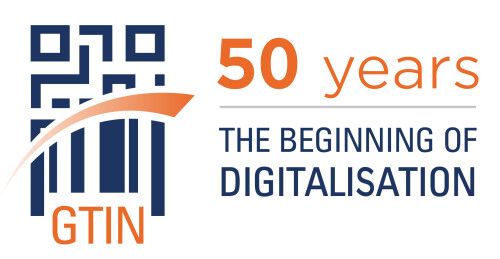The GTIN – the number behind the barcode – was developed 50 years ago and transformed the global economy
GS1 celebrates 50 years of digitalisation in commerce and calls for collaboration towards next-generation barcodes
HONG KONG SAR - Media OutReach - 31 March 2021 -50 years ago, on 31 March 1971, leaders from the biggest names in commerce came together and transformed the global economy forever by developing the Global Trade Item Number (known as the "GTIN"). This numerical code uniquely identifies every single product and is the core of the barcode, the most important supply chain standard in history. Today, the barcode is scanned over six billion times every day and remains one of the most trusted symbols in the world.

"This is one of the great, untold stories in the history of the modern economy. Half a century ago, fierce competitors came together, put aside their differences and remade global commerce for the better with the development of the GTIN, which in turn led directly to the creation of the barcode. As we celebrate this remarkable milestone, we call on businesses to collaborate once again to meet the needs of the 21st century economy by rapidly deploying and implementing new technologies, including data-rich, next-generation barcodes," said Kathy Wengel, Chair of GS1 Management Board and Executive Vice President & Chief Global Supply Chain Officer of Johnson & Johnson.
The 1971 historic meeting took place in New York City and included leaders from the biggest names in groceries, retail and consumer goods at the time, including Heinz, General Mills, Kroger and Bristol Myers Company. The executives agreed to create a system to uniquely identify every single product, calling it the Global Trade Item Number, or GTIN. With great foresight, they believed that the GTIN could have a positive impact even beyond the grocery store – from warehouses to board rooms – and would boost speed and efficiency of transactions and processes that could transform everything from supply chains to consumer experiences. And they agreed at the meeting to continue to innovate together to create a system that would benefit businesses and consumers alike. Decades later, the BBC named the resulting outcome one of "the 50 things that made the world economy."
"32 years ago, industry leaders in Hong Kong joined forces to introduce GS1 global barcode standard to the local retail industry, and in the process, revolutionised the retail check-out and supply chain. Today, barcode not only bridges the physical and digital worlds, but also supports companies' digitalisation to enhance supply chain transparency and efficiency, ensure product authenticity, and facilitate online and offline commerce," said Anna Lin, Chief Executive of GS1 Hong Kong.
GS1 standards continue to help make the vast complexity of modern, global business flow quickly, efficiently and securely, simplifying all kinds of supply chain processes in almost every sector all around the world. However, as consumers demand more and better product information, it is time to bring barcodes to the next level.
Developments towards next generation barcodes (such as QR codes), which can hold vastly more information, should be used to empower consumers with trusted information and reshape global commerce for a new century. Their use, for example, can tell consumers if a product contains allergens, if it is organic, and information on its carbon footprint. Ultimately, this provides consumers with a greater level of trust and loyalty relating to the products they buy.
"Our ultimate objective is to ensure transparency, satisfaction, safety and trust to our customers, our partners and our employees," said Özgur Tort, CEO of Migros Ticaret a.ş. and Co-Chair of Consumer Goods Forum. "Like our predecessors half a century ago, we as business leaders must come together now, to develop standards that deliver even more useful and accurate product information."
"We are proud to celebrate 50 years of collaboration, innovation and leadership, but we do so not to look back, but to look forward," said Anna. "GS1 Hong Kong will continue to work closely with our partners to innovate and pave the way to the widespread use of the next-gen barcode, unlocking the infinite possibilities that it entails."
About GS1 Hong Kong
Founded by the Hong Kong General Chamber of Commerce in 1989, GS1 Hong Kong (GS1 HK) is the local chapter of GS1®, which supports companies' digitalisation to enhance supply chain transparency and efficiency, ensure product authenticity, and facilitate online and offline commerce with global supply chain standards (product identification key and barcode) and a full spectrum of standard-based platforms, solutions and services.
Currently, GS1 HK has around 8,000 corporate members covering close to 20 industries including retail consumer goods, food and food services, healthcare, apparel, logistics as well as information and technology. By engaging with communities of trading partners, industry organisations, government, and technology providers, GS1 HK is fostering a collaborative ecosystem with the vision of "Smarter Business, Better Life".
Headquartered in Brussels, Belgium, GS1® is a not-for-profit, standards organisation that has 115 national chapters serving 150 economies globally.
For more information, please visit www.gs1hk.org .
